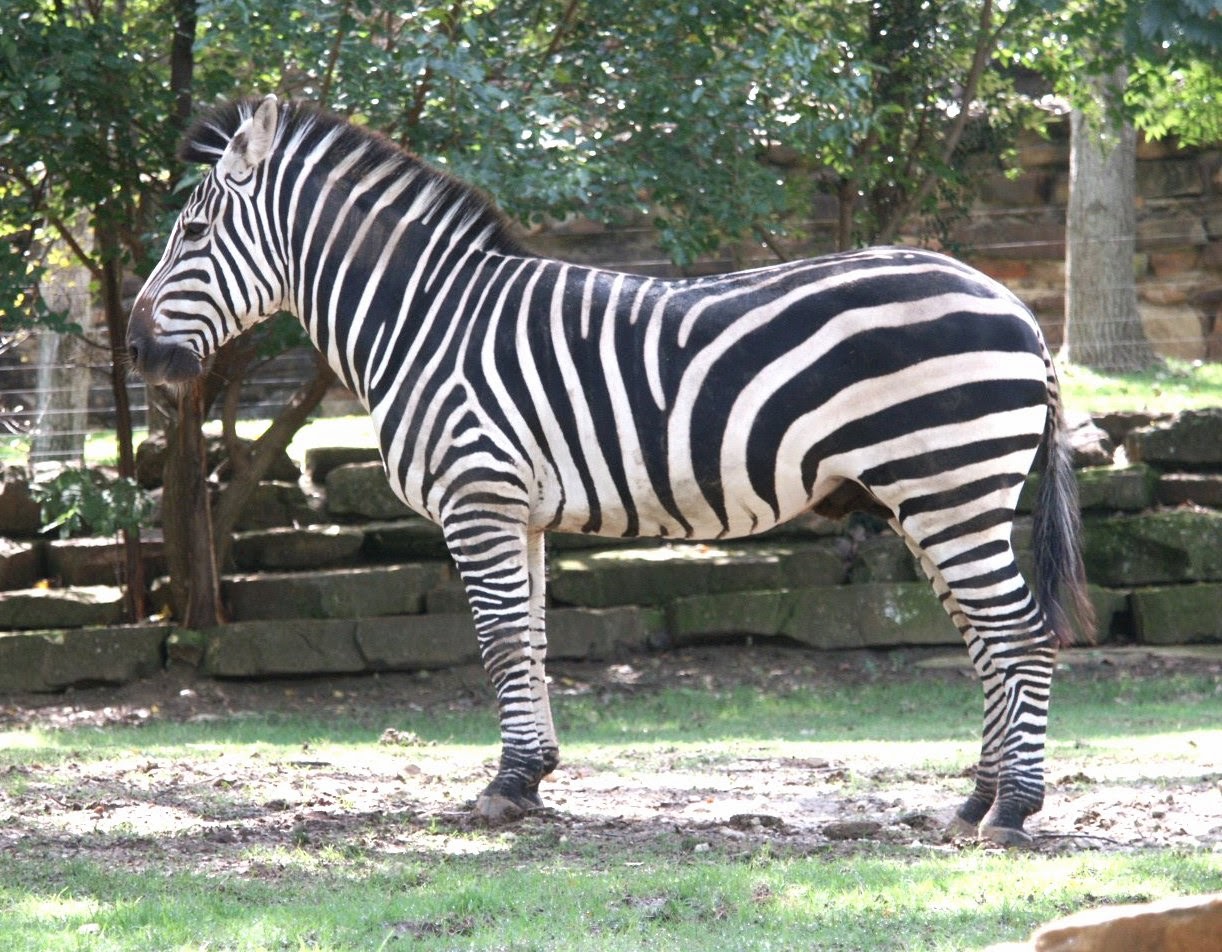Zebra
 Zebras are several species of African equids(horse
family) united by their distinctive black and white stripes. Their stripes come
in different patterns, unique to each individual. They are generally social
animals that live in small harems to large.
Unlike their closest relatives, horses and donkeys,
zebras have never been truly domesticated.
Zebras are several species of African equids(horse
family) united by their distinctive black and white stripes. Their stripes come
in different patterns, unique to each individual. They are generally social
animals that live in small harems to large.
Unlike their closest relatives, horses and donkeys,
zebras have never been truly domesticated.
There are three species
of zebras: the plain Zebra, the and the mountain zebra. The plains zebra and the
mountain zebra belong to the subgenus Hippotigris, but Grévy's zebra is
the sole species of subgenus Dolichohippus.
The latter resembles an ass,
to which it is closely related, while the former two are more horse-like. All
three belong to the genus Equus,
along with other living equid.
Kingdom:
|
|
Phylum:
|
|
Class:
|
|
Order:
|
|
Family:
|
|
Genus:
|
|
Subgenus:
|
|
Classification
There are three Collectively, two of the species have eight subspecies(seven extant). Zebra populations are diverse, and
the relationships between, and the taxonomic
status
of, several of the subspecies are not well known
Size and weight
The common plains zebra
is about 50–52 inches (12.2–13 hands, 1.3 m) at the shoulder with a
body ranging from 6–8.5 feet (2–2.6 m) long with an 18-inch (0.5 m)
tail. It can weigh up to 770 pounds (350 kg), males being slightly bigger
than females. Grevy zebra is considerably larger, while the mountain zebra is somewhat smaller.
Zebra
Reproduction
Female zebras mature
earlier than the males, and a mare may have her first foal by the age of three.
Males are not able to breed until the age of five or six. Mares may give birth
to one foal every twelve months. She nurses the foal for up to a year. Like
horses, zebras are able to stand, walk and suckle shortly after they are born.
A zebra foal is brown and white instead of black and white at birth.
Zebra
Zebra




No comments:
Post a Comment